|
The U.S. Grains Council develops export markets for U.S. barley, corn, sorghum and related products, including ethanol and distiller’s dried grains with solubles (DDGS). |
Headquartered in Washington, D.C., the Council has 10 international offices, additional representatives in 15 locations and programs in more than 50 countries. |
What We’re Doing For Farmers Now
Exploring New Pockets of Demand
- USGC staff and consultants have been promoting U.S. distiller’s dried grains with solubles (DDGS) to the underserved southern region of Mexico by meeting with end-users about the positive results of Council-led feeding trials.
- While the country bought more than 1.5 million metric tons of DDGS in 2014, there is potential for more when end-users in this region gain greater understanding of and access to the feed ingredient.
.
USGC’s Ethanol Export Promotion Is Heating Up
The Council and its partners – Growth Energy, the Renewable Fuels Association and USDA’s Foreign Agricultural Service (FAS) – are focused on promoting U.S. ethanol as a clean-burning source of fuel to buyers and end-users around the globe. Along with other activities, this work is done through:
- ongoing assessments and missions to overseas markets, including to India;
- bringing buyers teams to visit the United States; and
- a series of workshops focusing on the environmental and economic benefits of ethanol use in China.
The ethanol export promotion program also saw an early success in 2015 with a U.S. exporter confirming sales of 10 million gallons (37.85 million liters) of U.S. ethanol, valued at more than $15 million, to Peru following a trade team’s visit.

Maintaining Excellence In A Mature Market: Japan
- The Council’s promotion of U.S. coarse grains in Japan over the past 54 years has contributed significantly to the country remaining the top destination for U.S. corn exports.
- While the Council continues to nurture its traditional feed ingredient partners in this country, we are also building new market opportunities through engaging on potential ethanol sales and food sorghum promotion to stimulate demand among health-conscious Japanese customers.
Trade Policy Paves The Way For Increased Sales
Trade policy sets the rules of the road. This year Council members reaped the benefits of already-enacted FTAs. Examples of this include:
- Exports to Colombia, the third largest market for U.S. corn during the 2014/2015 marketing year, were up 23 percent in tonnage.
- Exports to the CAFTA-DR countries combined made up the fifth largest market for U.S. corn, with sales up 19 percent from a year ago.
- Exports to Korea made it the United States’ fourth largest market for corn and DDGS and our sixth largest market for U.S. barley, all of which have permanent duty-free status because of the FTA.
Assessing the Sub-Saharan African Market
- The Council’s initiative in Tanzania was launched in early 2014 to help local feed producers and farmers provide a higher-quality product to consumers and, over the long term, build demand for coarse grains used as feed.
- In December, leaders from the Council traveled to Africa, where they saw the prospects for long-term growth in the Tanzania program and a potential near-term opportunity for exports to South Africa, where El Niño has created a severe drought and hurt local production.

